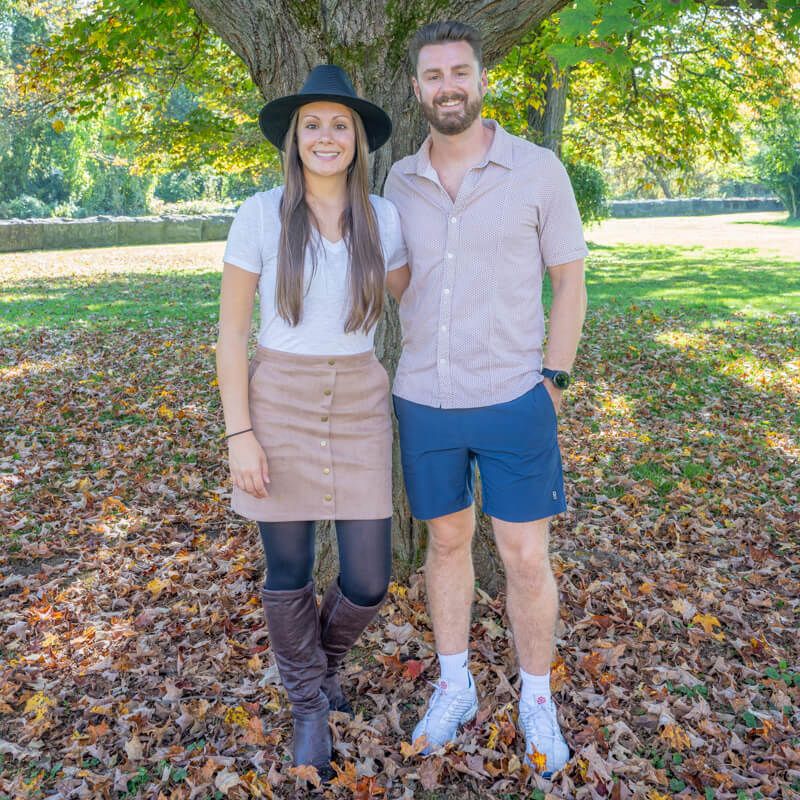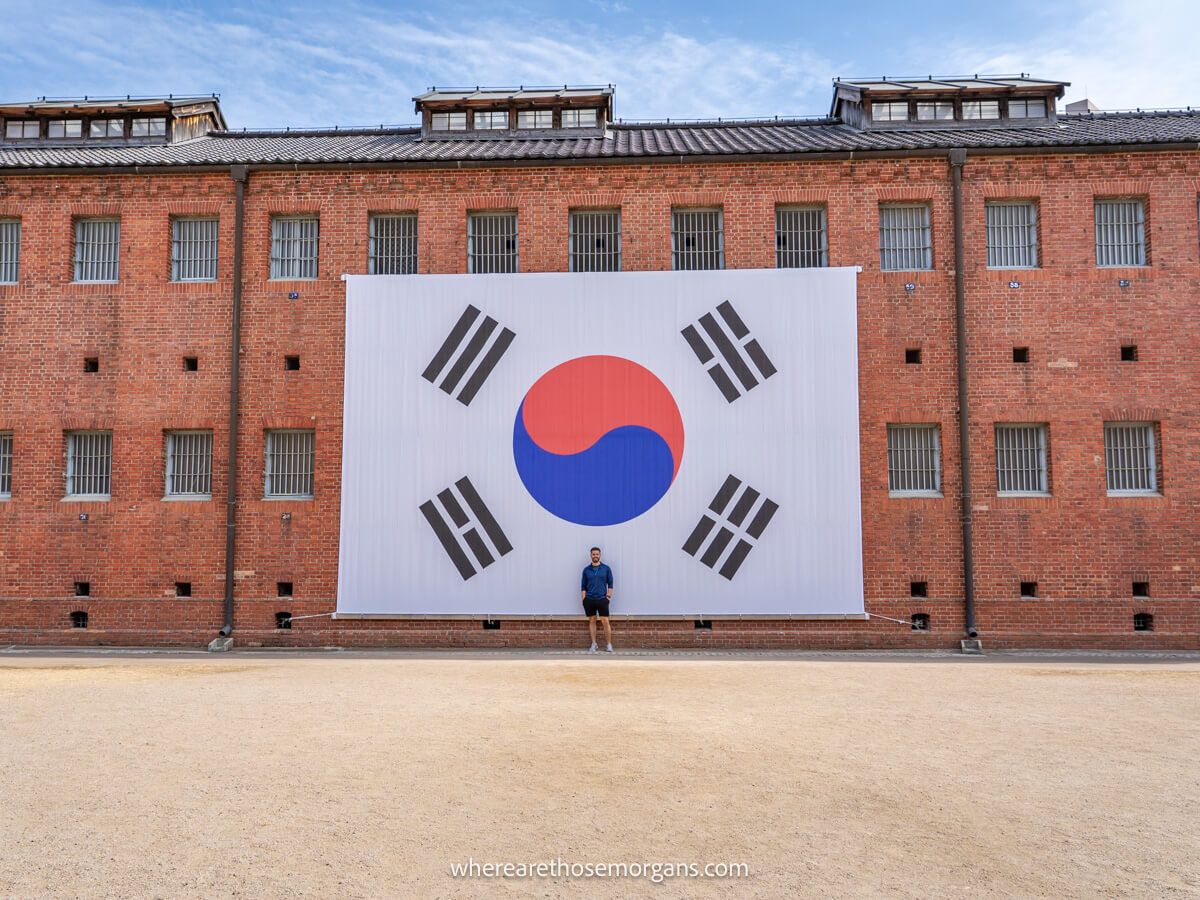The Seodaemun Prison History Hall is an interesting museum located in western Seoul within Independence Park. This prison has a dark history and it showcases Japanese cruelty over Korea which occurred during the occupation from 1910-1945 with numerous exhibits, audio and video footage.
In this guide, we’re going to show you everything you need to know about visiting Seodaemun Prison including tips for your trip and how to make the most of your time.
Our Seoul Experience
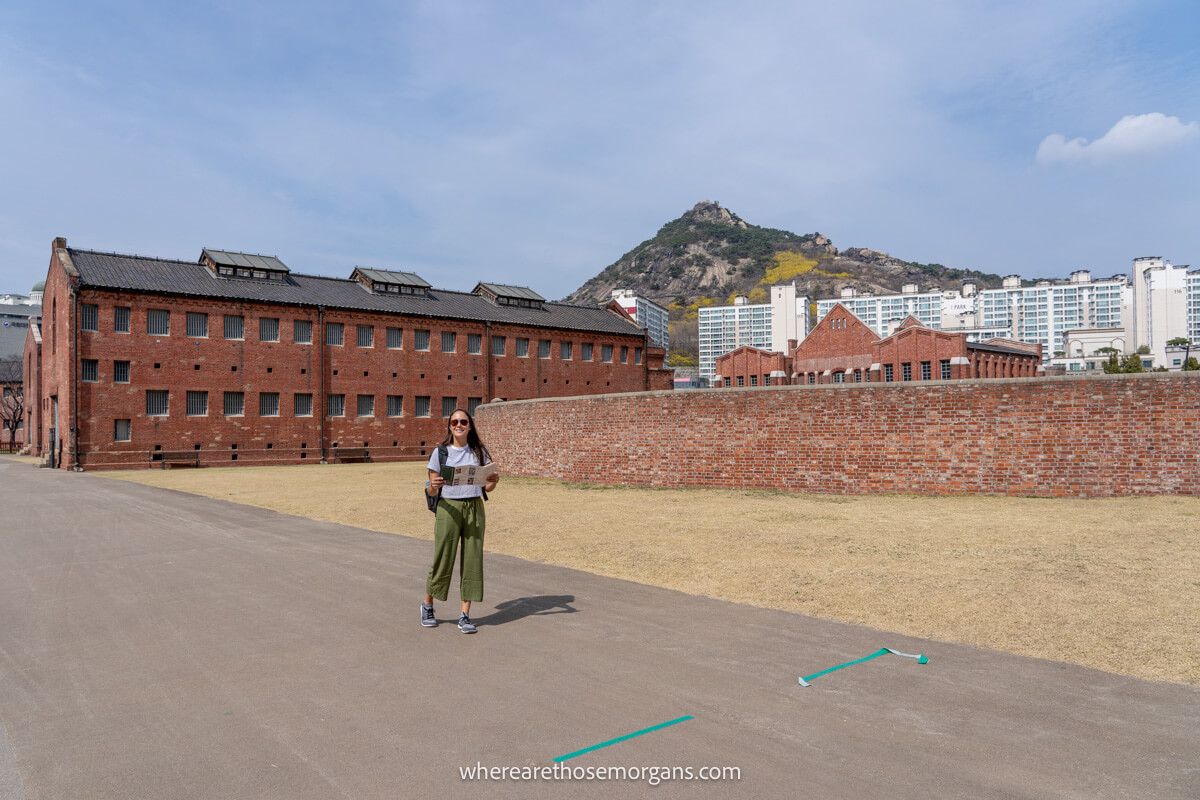
We spent 14 days exploring Seoul in March 2023 and during our trip, we personally visited Seodaemun Prison. While this prison might not be at the top of everyone’s Seoul Bucket list, there is so much to see and learn within this unique museum.
It’s very easy to visit the prison because you can use an informational brochure to follow a general walking route around the complex. The majority of the information is displayed in Korean, but we thought there was enough English translation to make it worth visiting. Read more about us.
What Is Seodaemun Prison?
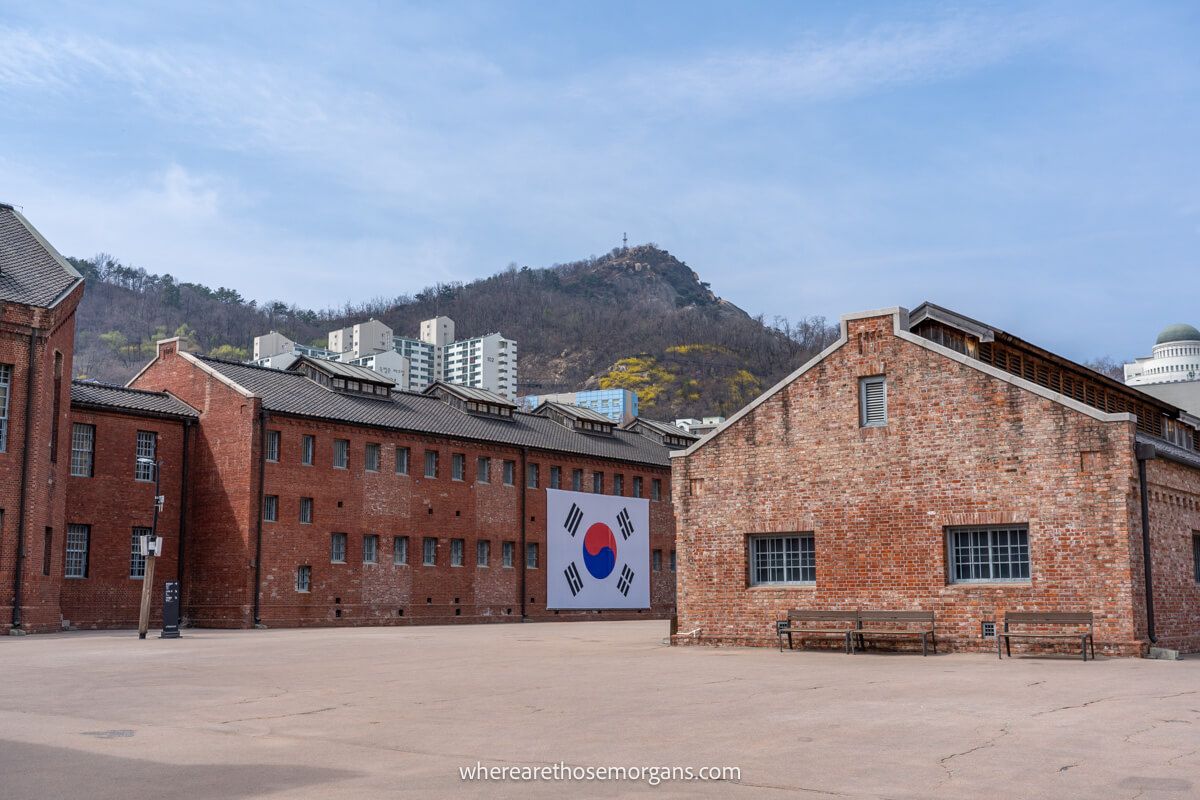
Opened in 1908 by Japanese imperialists, Seodaemun Prison was originally known as Gyeongseong Prison. It was built to imprison independence activists until the liberation of Korea in 1956. Sadly, the facility was initially used as a place of punishment for anti-Japanese activists who spoke out during the Japanese colonial period.
After Korea’s liberation from Japan, it became the Seoul Detention Center to jail activists who tried to fight against Korea’s military rulers and dictators. In 1987, the Seoul Detention Center was eventually moved to Uiwang, Gyeonggi-do Province.
At the time, no one knew what to do with the empty grounds, but descendants of the activists opposed the demolition of the complex. So it was reopened on November 5th in 1998 as Seodaemun Prison History Hall to educate visitors about Korea’s turbulent past.
Seodaemun Prison Tickets
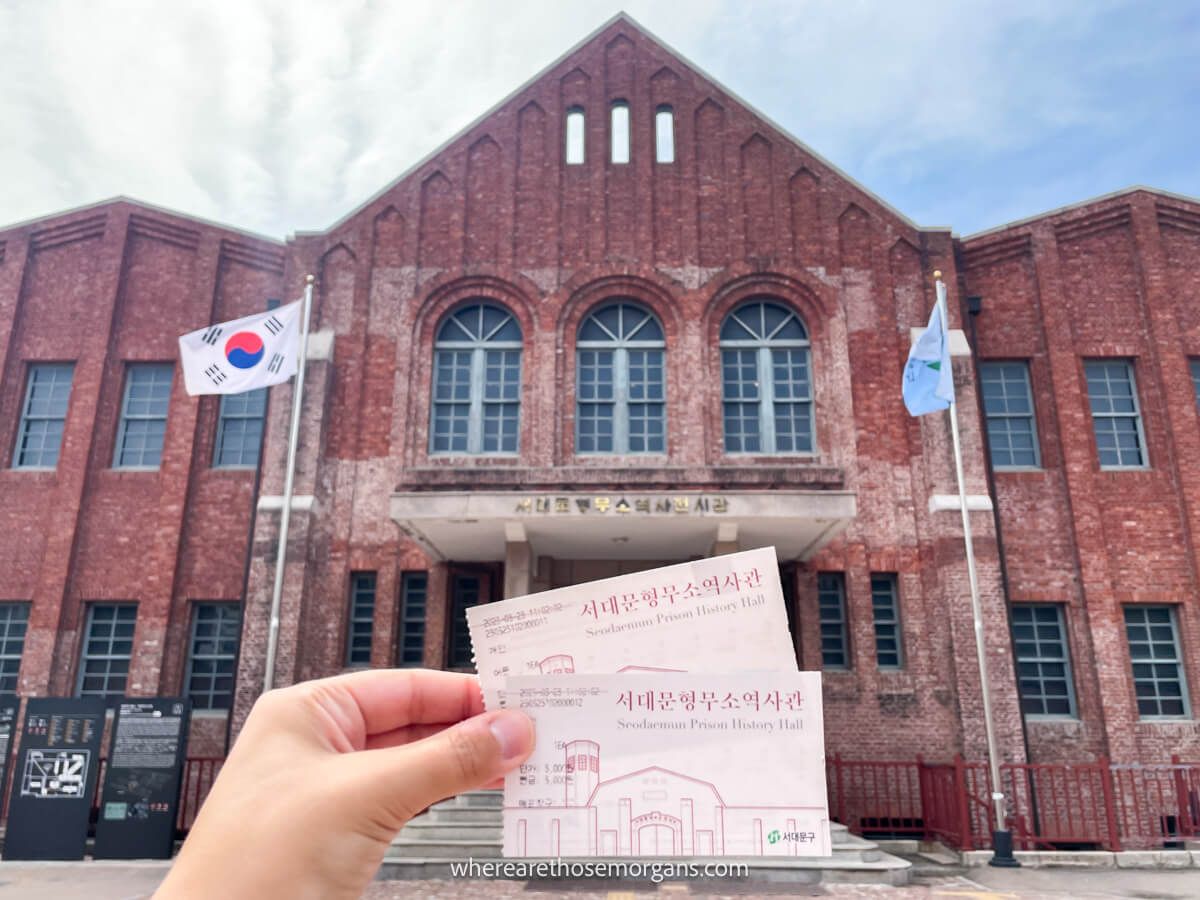
If you plan to visit, Seodaemun Prison History Hall is located on the western side of Seoul. The best subway station for visiting is Dongnimmun Station along Line 3 and then take exit 5 for the most direct route.
It’s open every day of the week except Monday from 9:30am to 18:00 March to October and 9:30am to 17:00 November to February. You can visit the official website here to verify information before visiting.
Admission tickets for the Seodaemun Prison cost:
- 3,000 KRW (US$ 2.26) for adults ages 19-64
- 1,500 KRW (US$ 1.13) for teenagers ages 13-18
- 1,000 KRW (US$ 0.75) for youths ages 7-12
Group tickets are also available for 20 or more visitors. We purchased our tickets onsite, but you can book education programs and exhibition commentary on the official website here.
If you don’t sign up for a program, the only way to visit the prison is with a self guided tour. You’ll see the administration building, interrogation rooms, prisoner playground and execution building.
Travel Tip: The last admission to the prison is 30 minutes before closing.
What To See At Seodaemun Prison
When you visit the prison, you’ll be given an informational brochure to tour the entire complex with a suggested route displayed by arrows on the ground or nearby buildings. There are four main sections including the exhibition hall, prison exhibition, outdoor exhibition and independent activists exhibit.
We loved that visitors can freely walk throughout the grounds because you can go at your own pace depending on what interests you. Here’s what you should look for during your visit:
1. Administration And Security Office
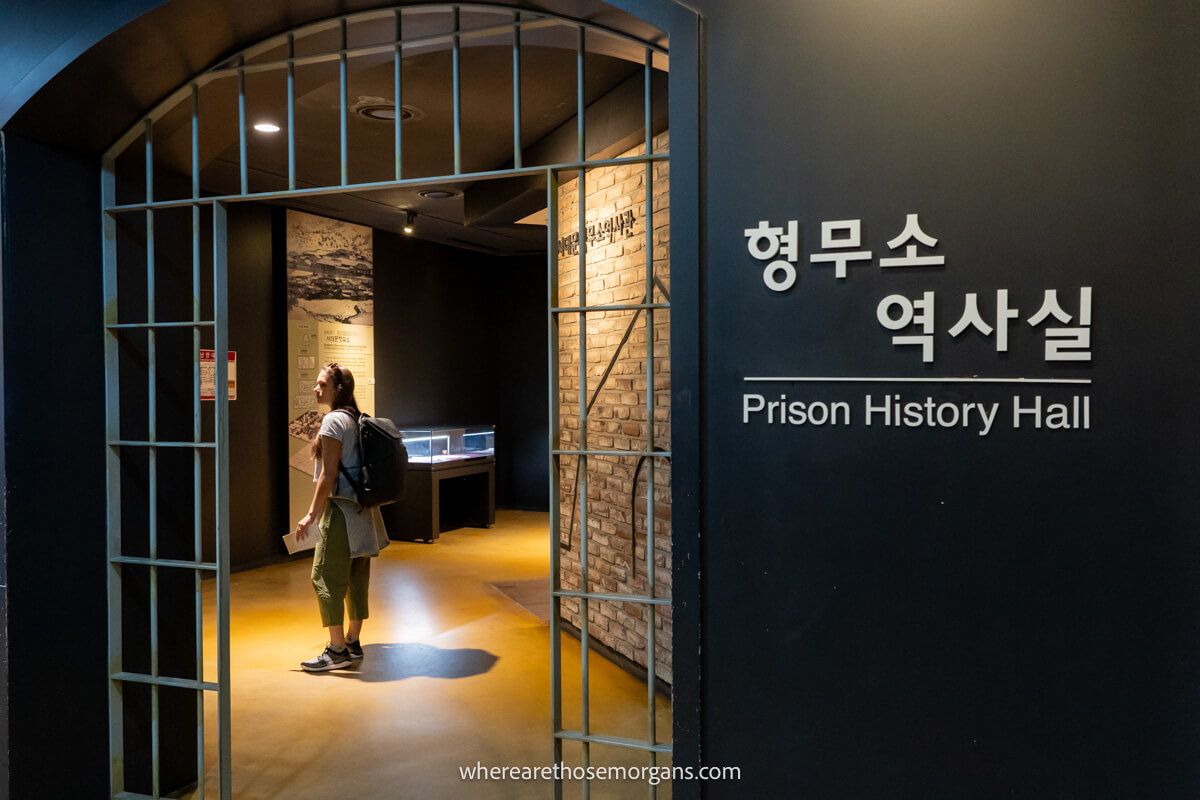
The first building you’ll encounter is the Administration and Security Office. Built in 1923, this is the main building of the complex featuring two floors and a basement. The Administration Building is the best place to start your tour.
Originally used as an office, the first floor is now home to the Prison History Room. It showcases information about the judicial system and the expansions of prisons in Korea. We also loved the documentary video located within this section.
After going through the first floor, you should visit the second floor next. This space was used as a meeting room and director’s office. Today, the second floor exhibits various National Resistance Rooms. You’ll see house relics and prisoner cards from the independant activists as well as models of the execution room and morgue.
However, the basement in this building is the hardest area to visit because it’s primary purpose was to apprehend suspects. You’ll see both the investigation and interrogation rooms. We found it very difficult to read the testimonials of torture.
2. Central Prison Buildings
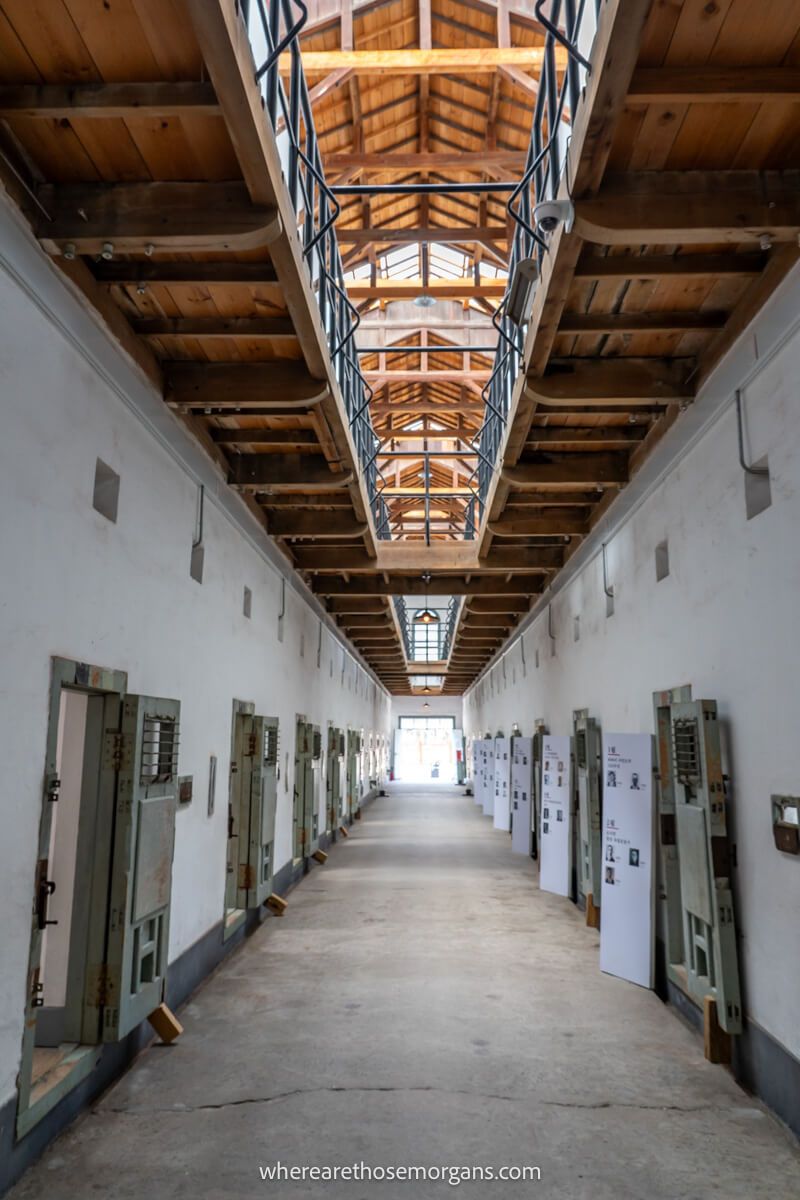
After making your way through the Administration Building, you’ll continue on to the prison blocks. This is where you can see the actual jail cells that once housed prisoners. Here you can read exhibits about the prison life including organizational structure, monitoring tools and daily routines of inmates.
While most of the stories were heartbreaking, we liked being able to read stories about the individual prisoners because we learned about the challenges they faced on a daily basis.
Travel Tip: A panopticon was built to connect prison buildings 11 and 12 which allow the guards to oversee both buildings at the same time.
3. Labor Building
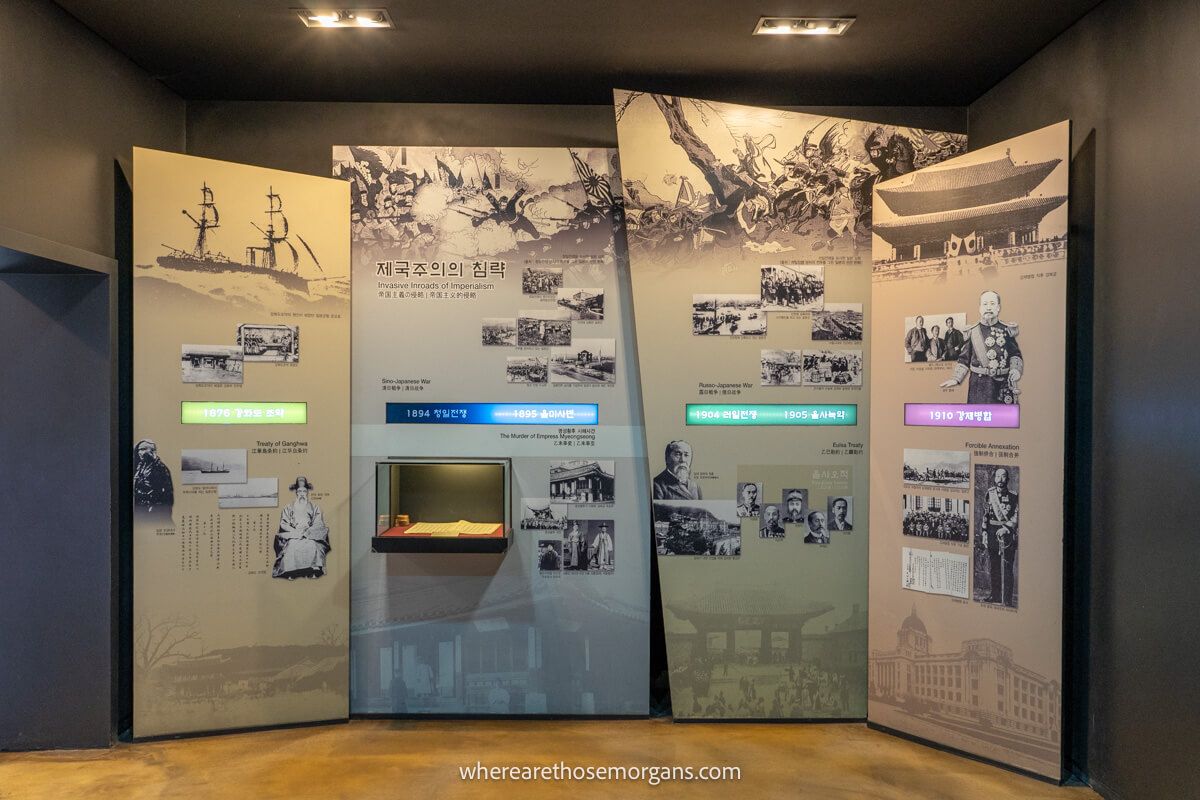
Built in 1923, this is one of the factory buildings used for forced labor which often consisted of woodworking and manufacturing clothes. Inside the building, you can watch actual footage of prisoners being made to manufacture goods. Additional exhibits also display records and relics illustrating the forced labor inmates faced.
4. Leper’s Building
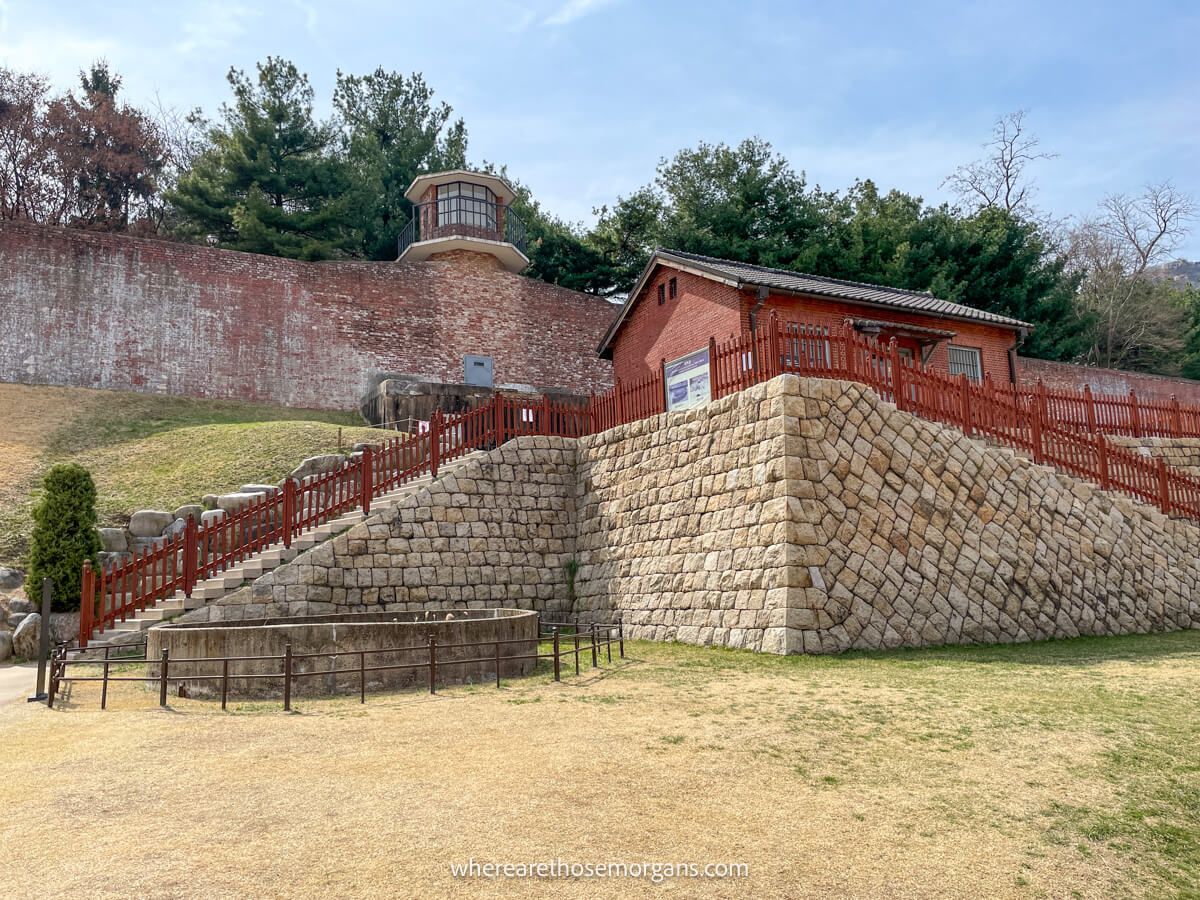
Located away from the main buildings on a small hill within the complex, the Leper’s Building was used to isolate prisoners who were suffering from leprosy. You can not go inside this building, but you can read a small informational board nearby.
5. Reverence Space
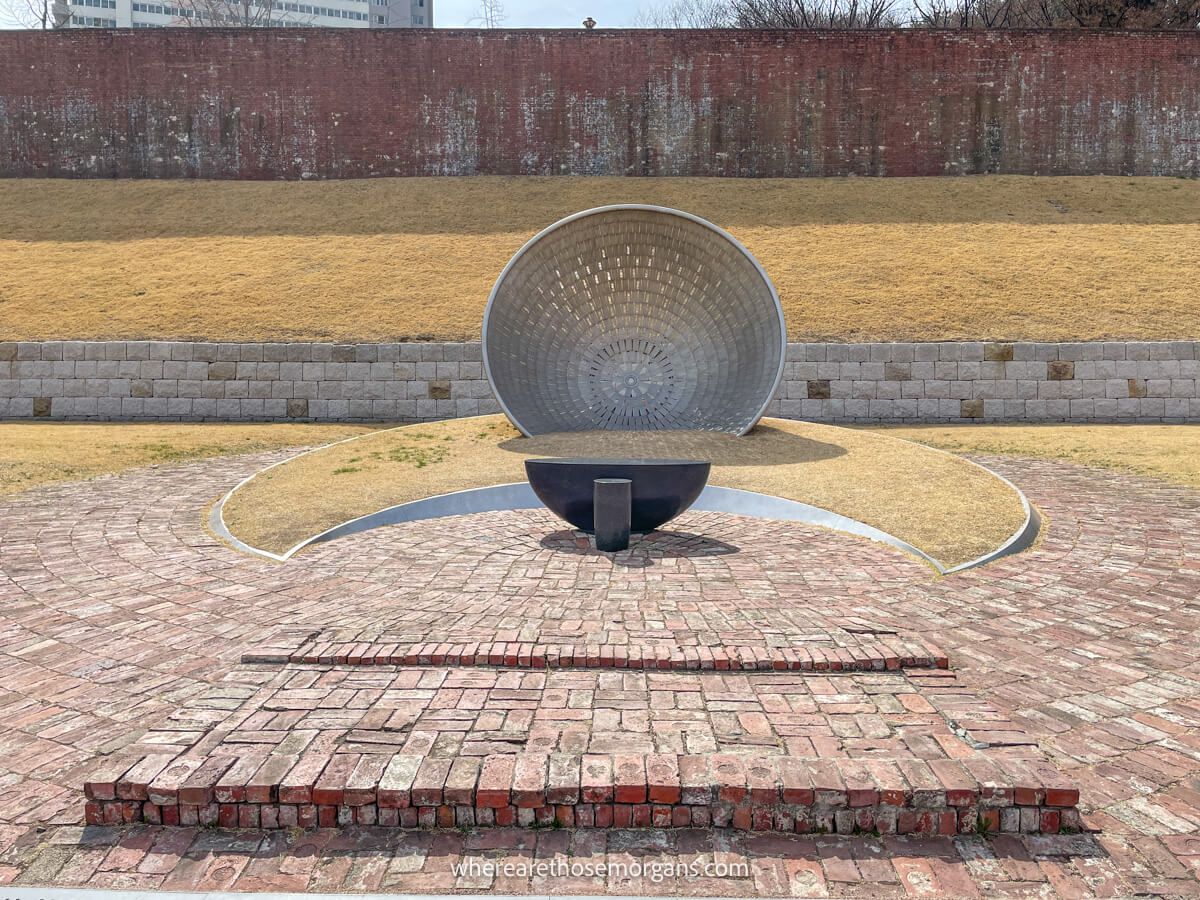
The Reverence Space is an art exhibit dedicated to the memory of anti-colonial independence activists who lost their lives. You’ll find it just past the Leper’s Building.
6. Execution Building
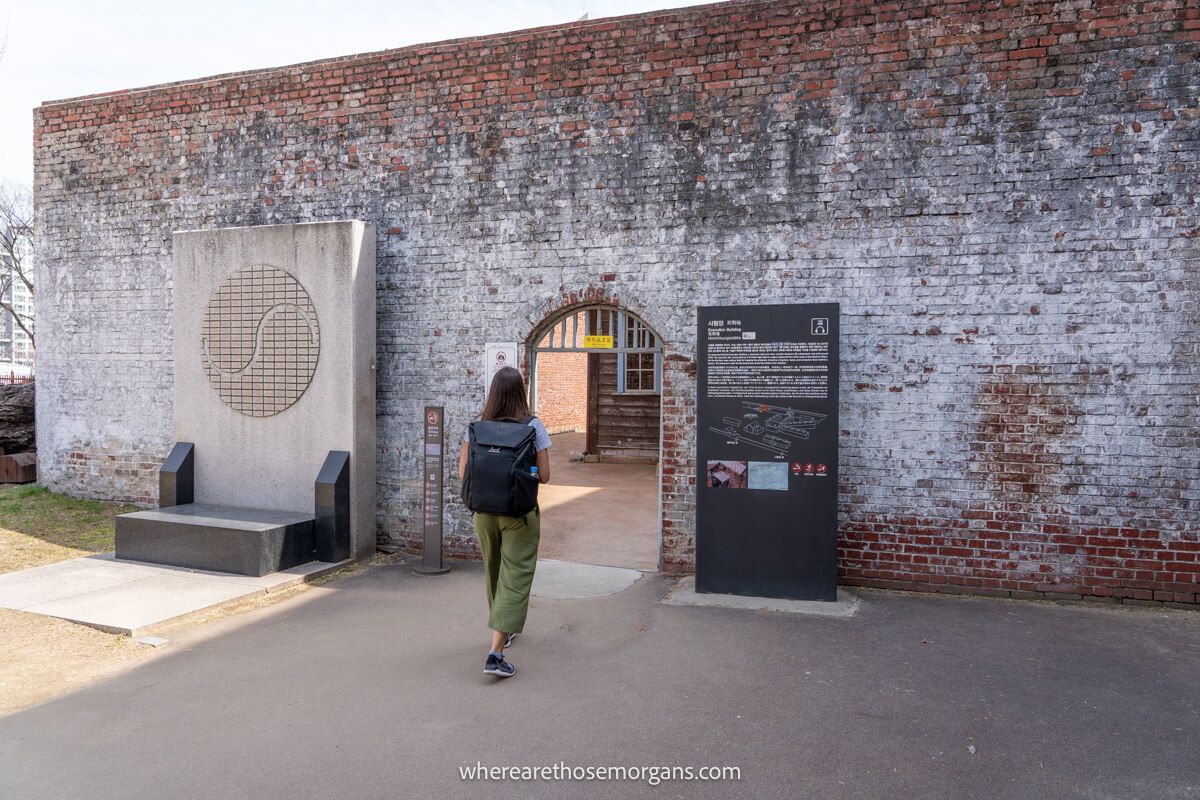
One of the most shocking buildings inside Seodaemun Prison is the execution house. Constructed in 1910, this small house was used to carry out the death sentence during the Japanese colonial period until 1987.
This Japanese-style wooden building contains one floor above and one floor below ground. We did not include a picture of the actual building to respect those who lost their lives here, but you can still see inside this unsettling structure today.
There is a small lever which was used to open the floor boards during a hanging when appropriate. After the execution, the floor boards would close and bodies could be recovered in the cellar. At the back of the execution building, you’ll see the back entrance from the basement.
7. Corpse Removal Exit
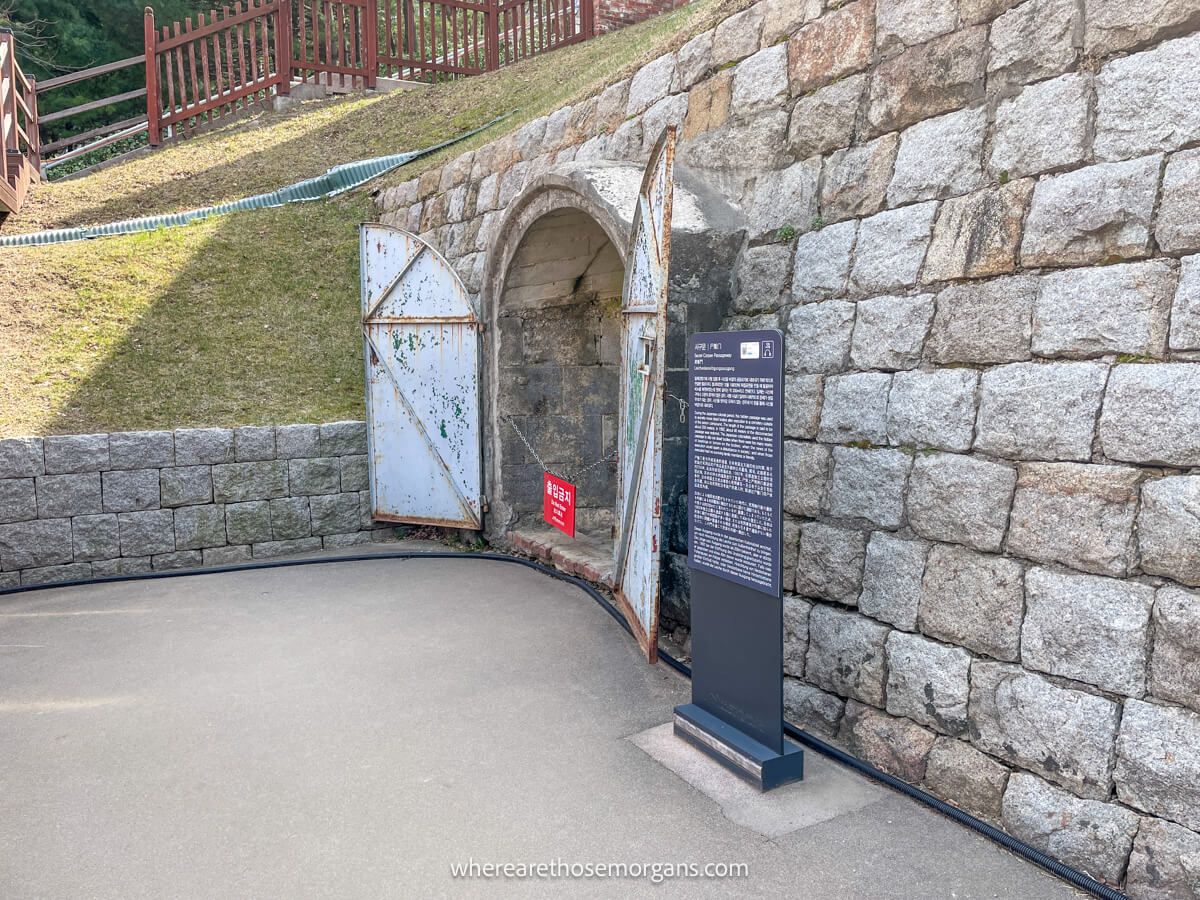
Just behind the execution grounds, you’ll find the corpse removal exit. This secret door and passage was used to remove a corse after execution. In 1992, part of this passage collapsed when Independence Park was created, but about 40m of the tunnel has been restored. The original passage was said to be about 200m when it was used.
8. Gyeokbyeokjang
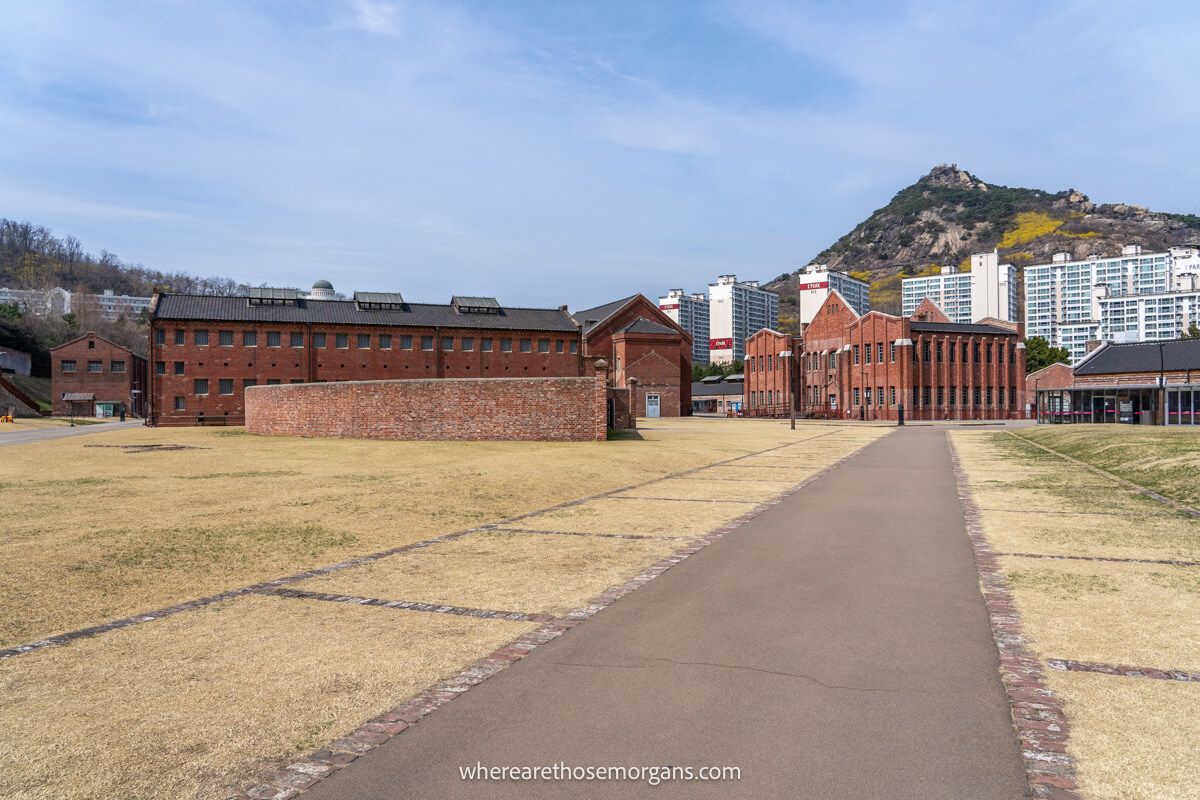
Gyeokbyeokjang is located in the middle of Seodaemun Prison and it was used a playground for the inmates so they could get some exercise. Partitions or bulkheads were used as a means of control to separate and monitor prisoners to prevent them from talking or escaping.
This stone facility was demolished in 2011, but it was restored to its original appearance about 20m from the first location which is the one we can see today.
9. Women’s Prison Building
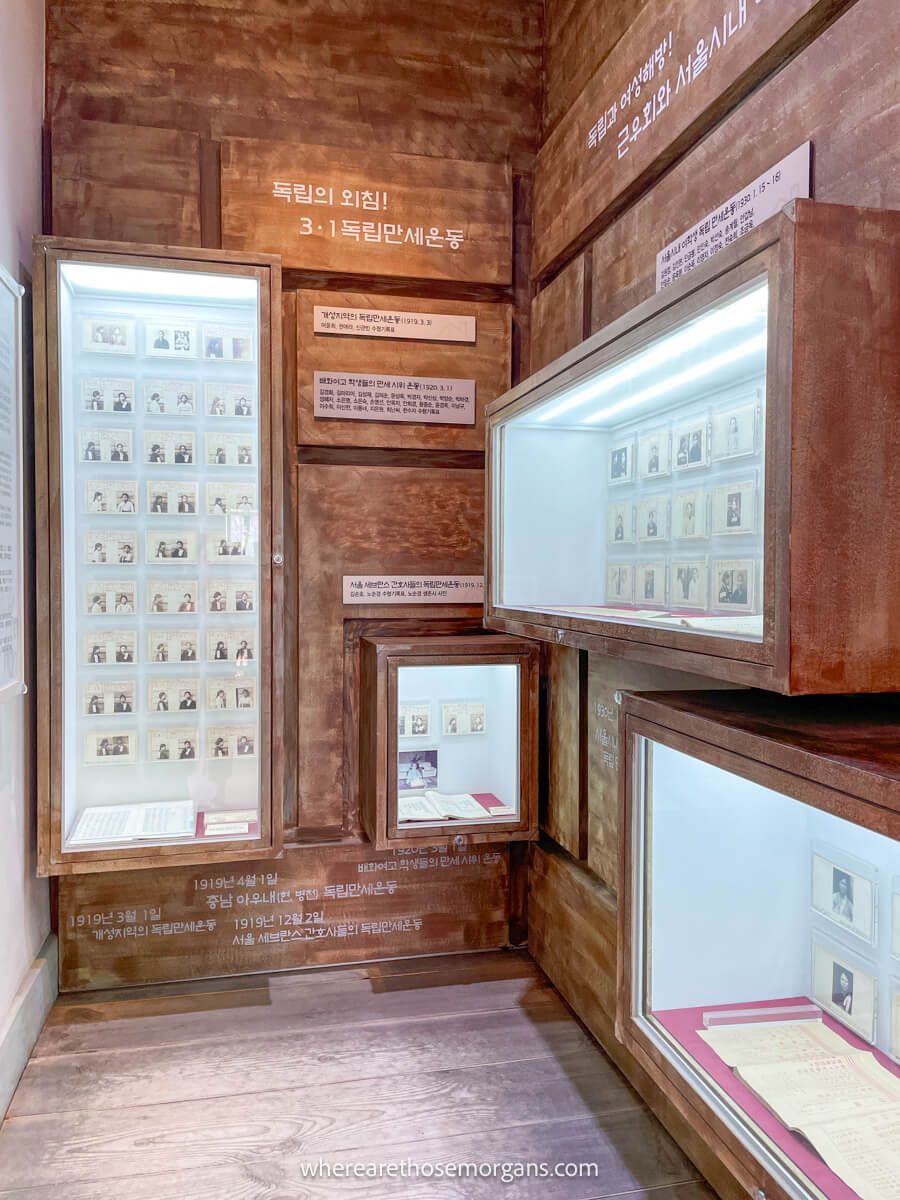
Also known as Yeooksa Temple, the women’s prison building was constructed around 1916 as a detention center for female prisoners. You can go inside this building and we encourage you to read the harrowing stories about the brave women who found themselves imprisoned here.
10. Watchtower
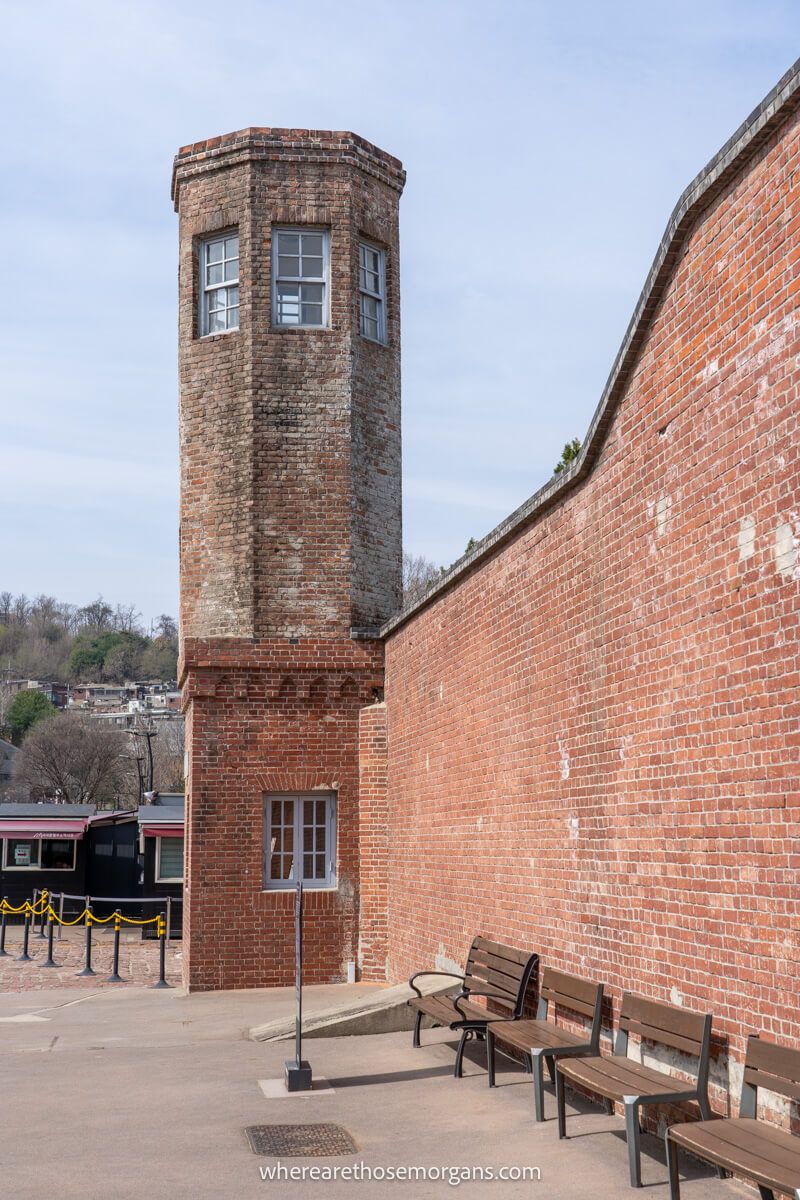
Last but not least, take note of the two watchtowers you’ll find on the grounds during your tour. Originally, this complex had six watchtowers, but there are only two remaining.
These watchtowers were built to help monitor prisoner movements to prevent them from escaping. Each watchtower is 10m high and the best one to visit is right near the main entrance gate.
The Morgan Conclusion
Seodaemun Prison History Hall is a unique museum that now serves as a tribute to independent activists and helps to showcase the road to freedom in Korea. If you’re interested in history, visiting this prison is a great way to learn about the difficulties Koreans faced under the Japanese occupation.
Is Seodaemun Prison worth it?
Yes, Seodaemun Prison is worth visiting because it memorializes many Koreans who lost their lives fighting for peace. We thought this museum was extremely well put together and good for visitors who want to learn about the history of South Korea. Prior to visiting, we did not know what happened under the 1910-1945 Japanese occupation of Korea.
While not all exhibits are displayed in English, you can still find enough information to understand what’s going on. If you plan to explore all of the buildings and outdoor exhibits, you should plan about 1-2 hours to visit the Seodaemun Prison.
Our Seodaemun Prison Photos
We enjoyed our visit to this prison and took many photos. Here are a few to help you understand more about what you can see at the complex:
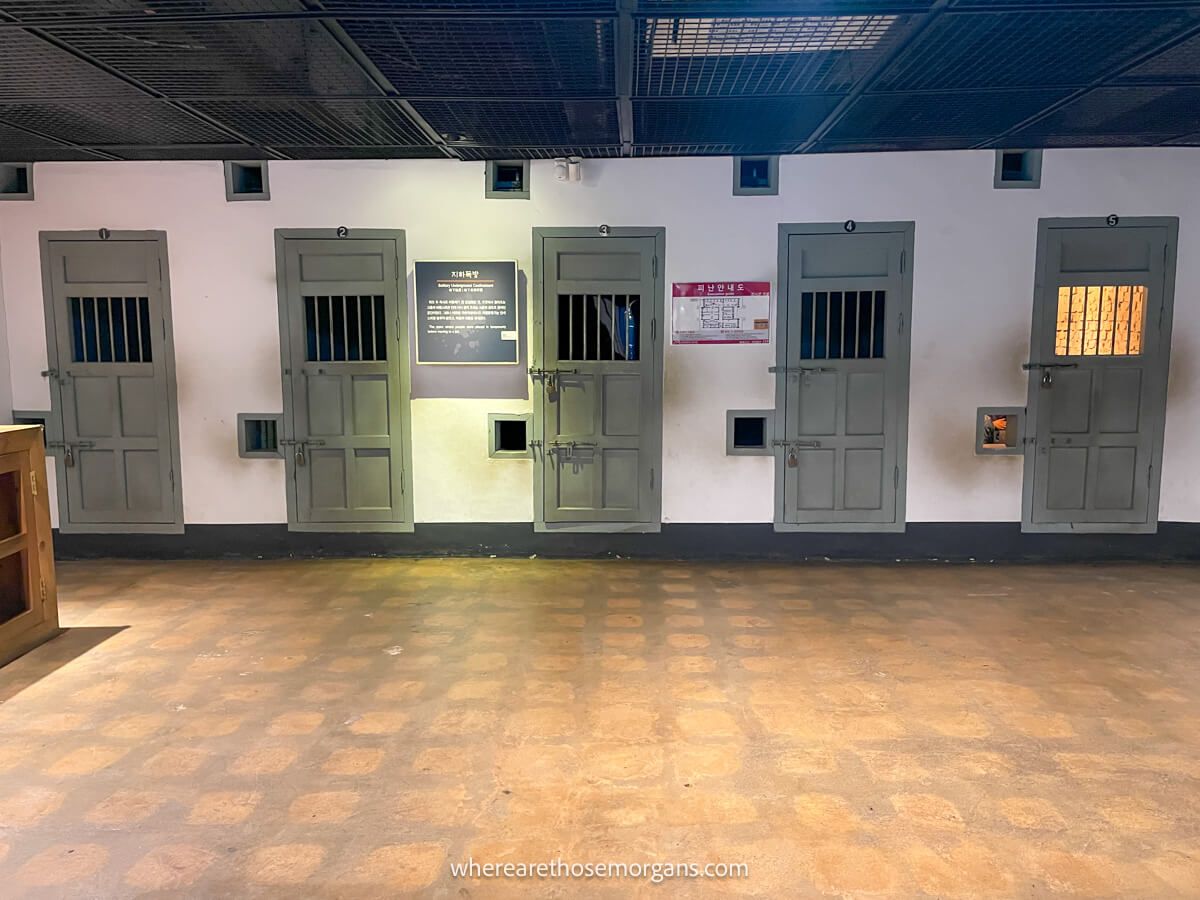

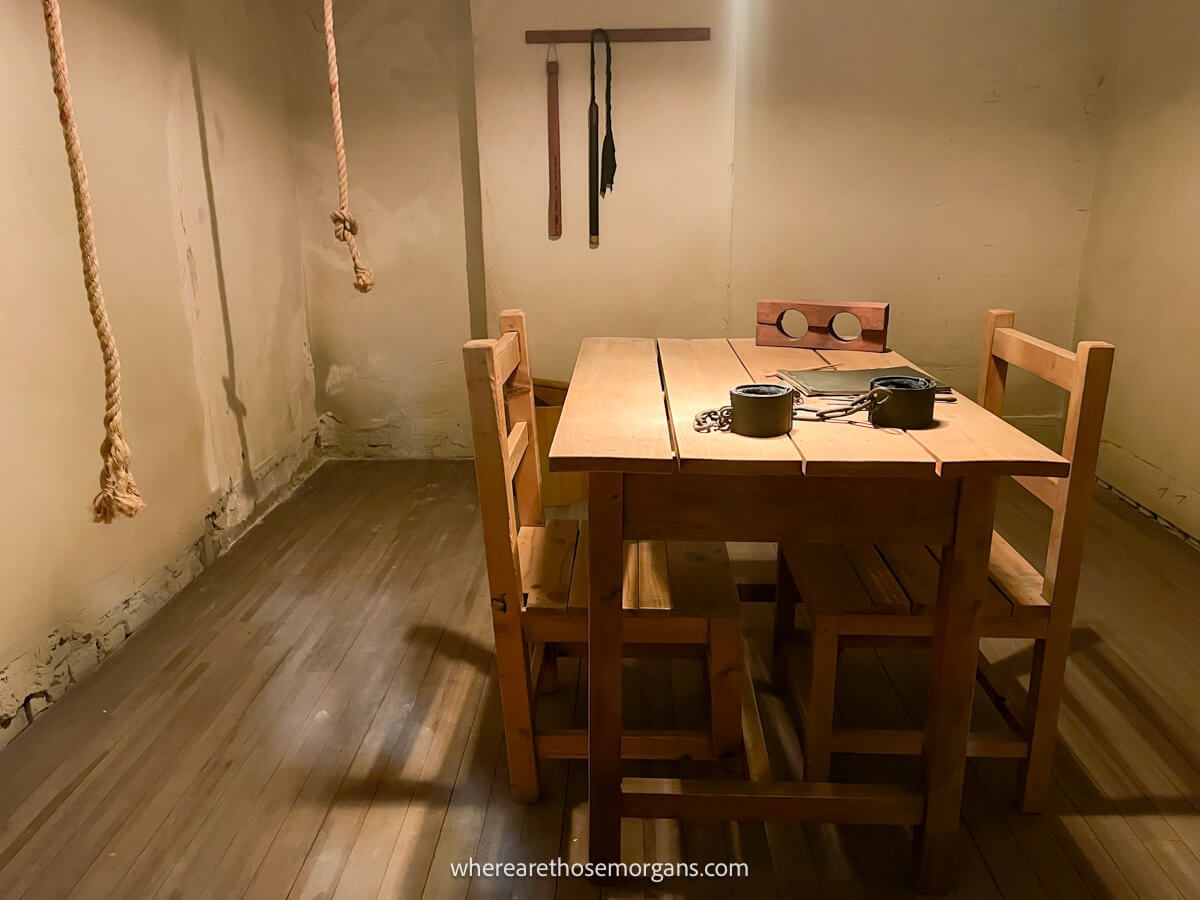
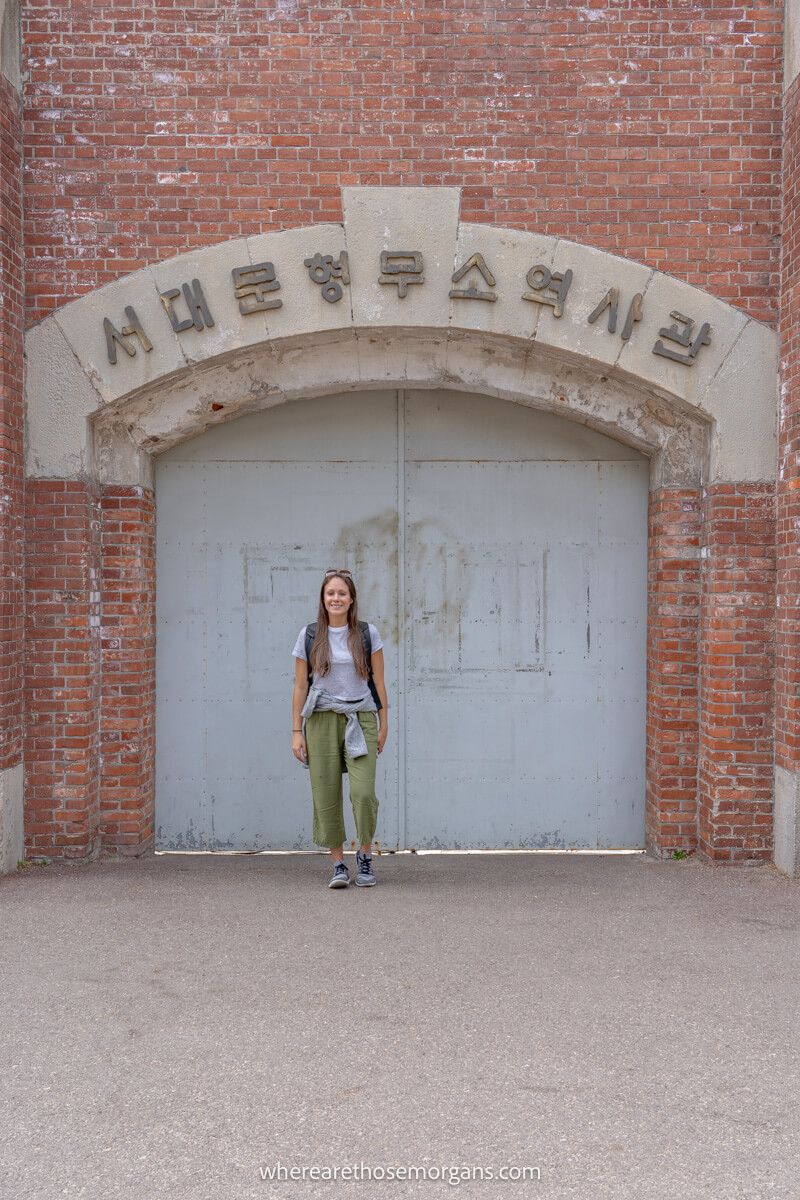
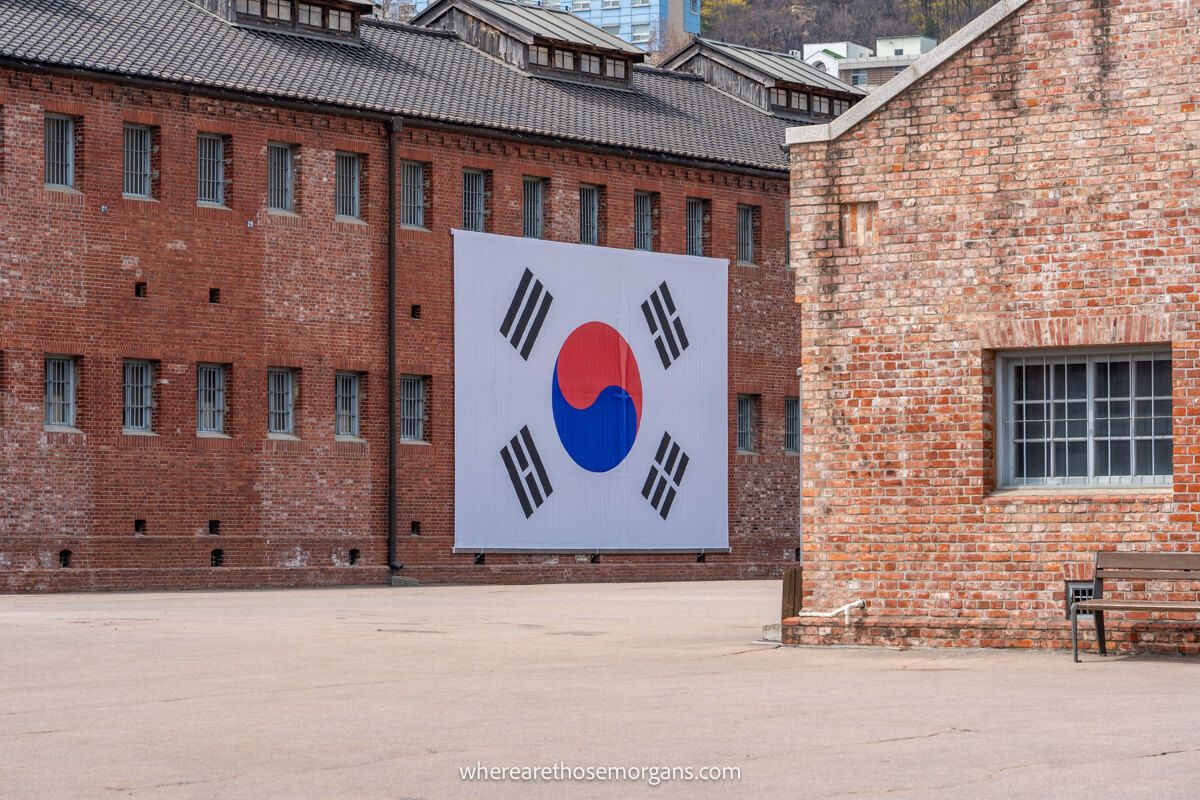
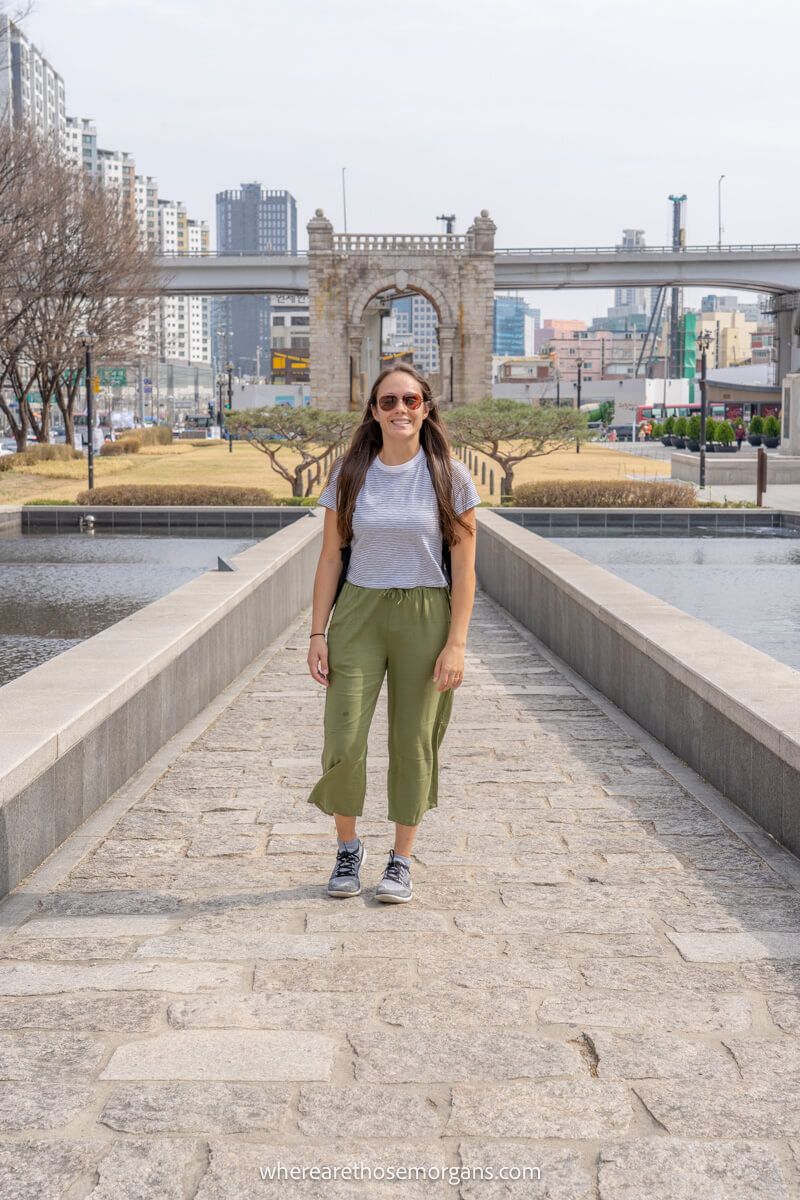
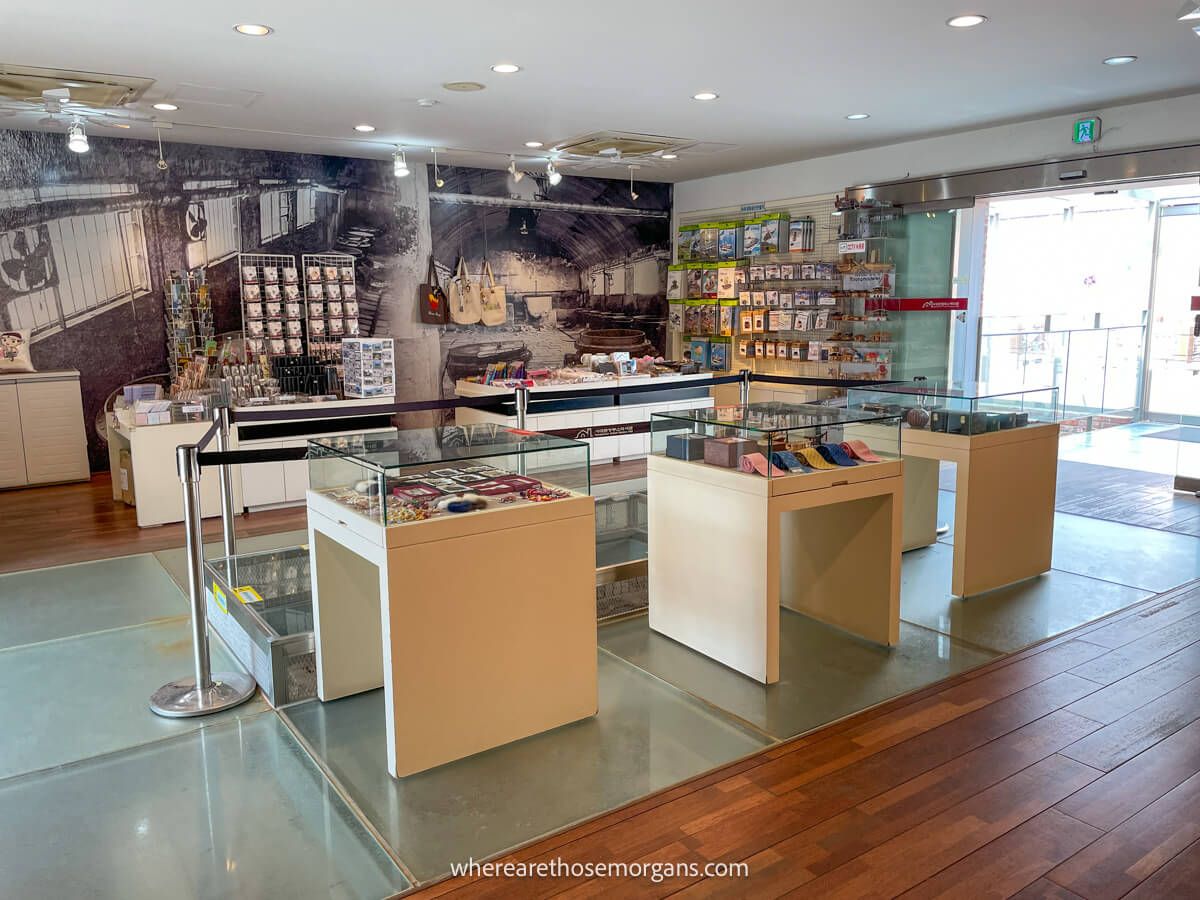

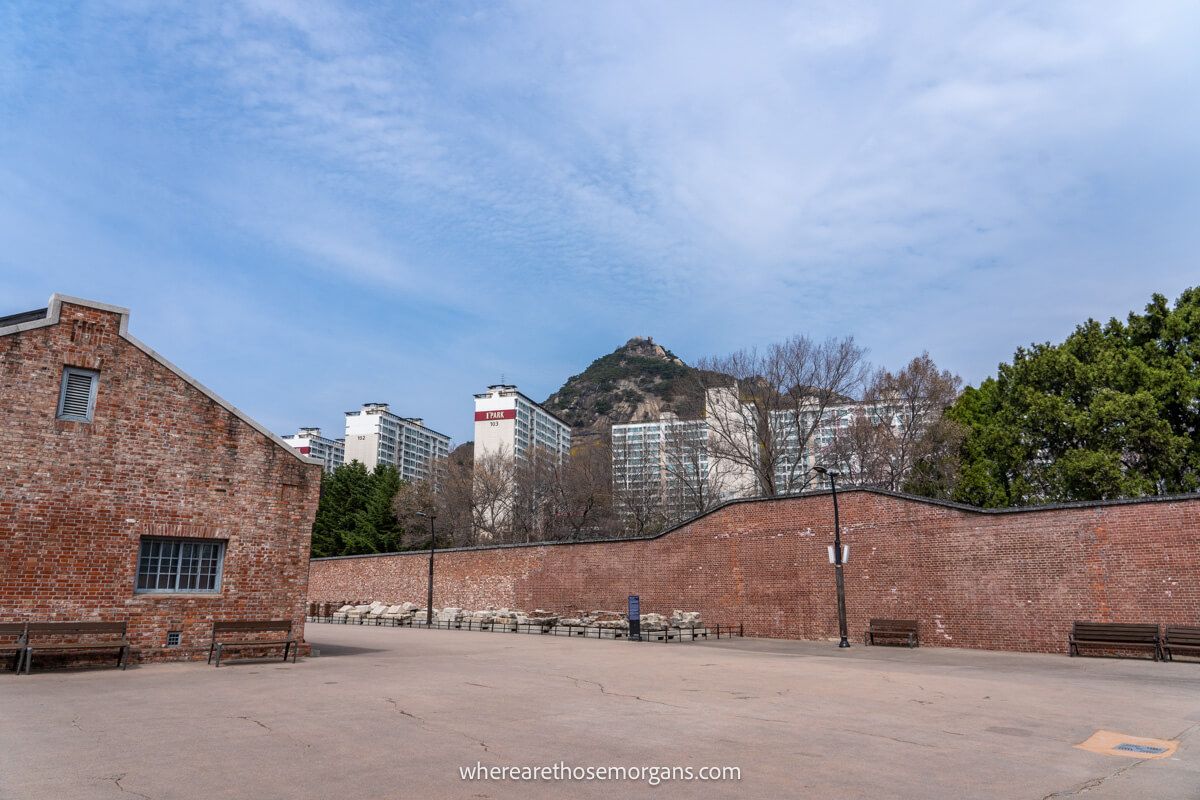
Our Popular Seoul Guides
- 35 best activities to do Seoul
- How to book the best DMZ Tours
- Fun things to do in Imjingak Park
- Complete guide to visiting N Seoul Tower
- How to visit Seoul Sky in South Korea
- Best palaces to visit in Seoul
- 20 best hotels for Seoul
Want more Seoul content? Head over to our South Korea Travel Guides to explore the very best of Seoul and beyond.
We hope this guide featuring the best things to do at Seodaemun Prison Museum helps with planning your visit to Seoul!
Please let us know if you have any questions about visiting this prison or South Korea in the comments below.
Happy Travels,
Mark and Kristen
Enjoy this Seodaemun Prison guide? Pin it for your visit!
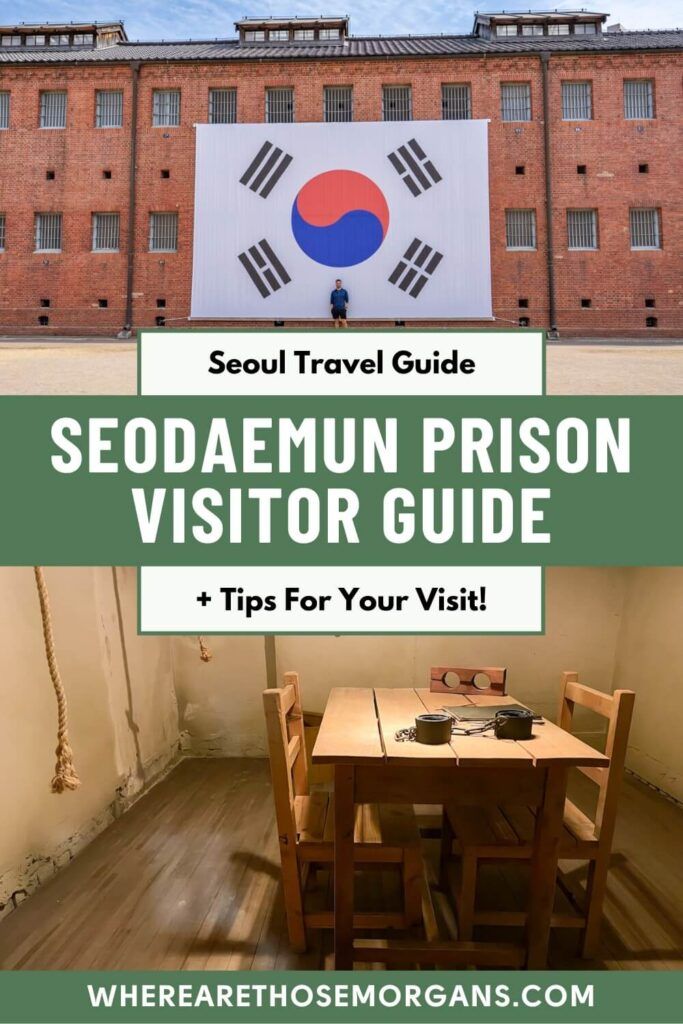
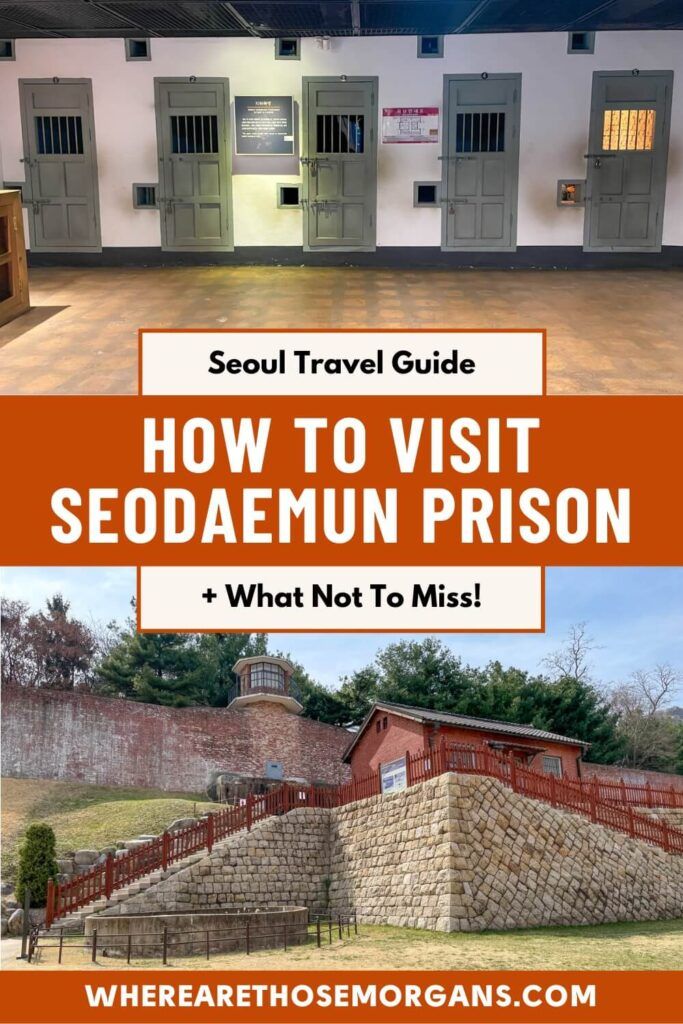
Note: This article contains affiliate links. When you make a purchase using one of these affiliate links, we may earn a small commission at no extra cost to you.
All Rights Reserved © Where Are Those Morgans, LLC. Republishing this article and/or any of its contents (text, photography, maps, graphics, etc.) in whole or in part is strictly prohibited.
Mark and Kristen Morgan are travel, hiking and photography experts. Over the last 6 years traveling full time, they have explored more than 40 countries and 30 US states.
Where Are Those Morgans has been featured in USA Today, Gestalten, Get Your Guide, CityPASS and Condé Nast Traveler along with various other publications. Read more about us.

